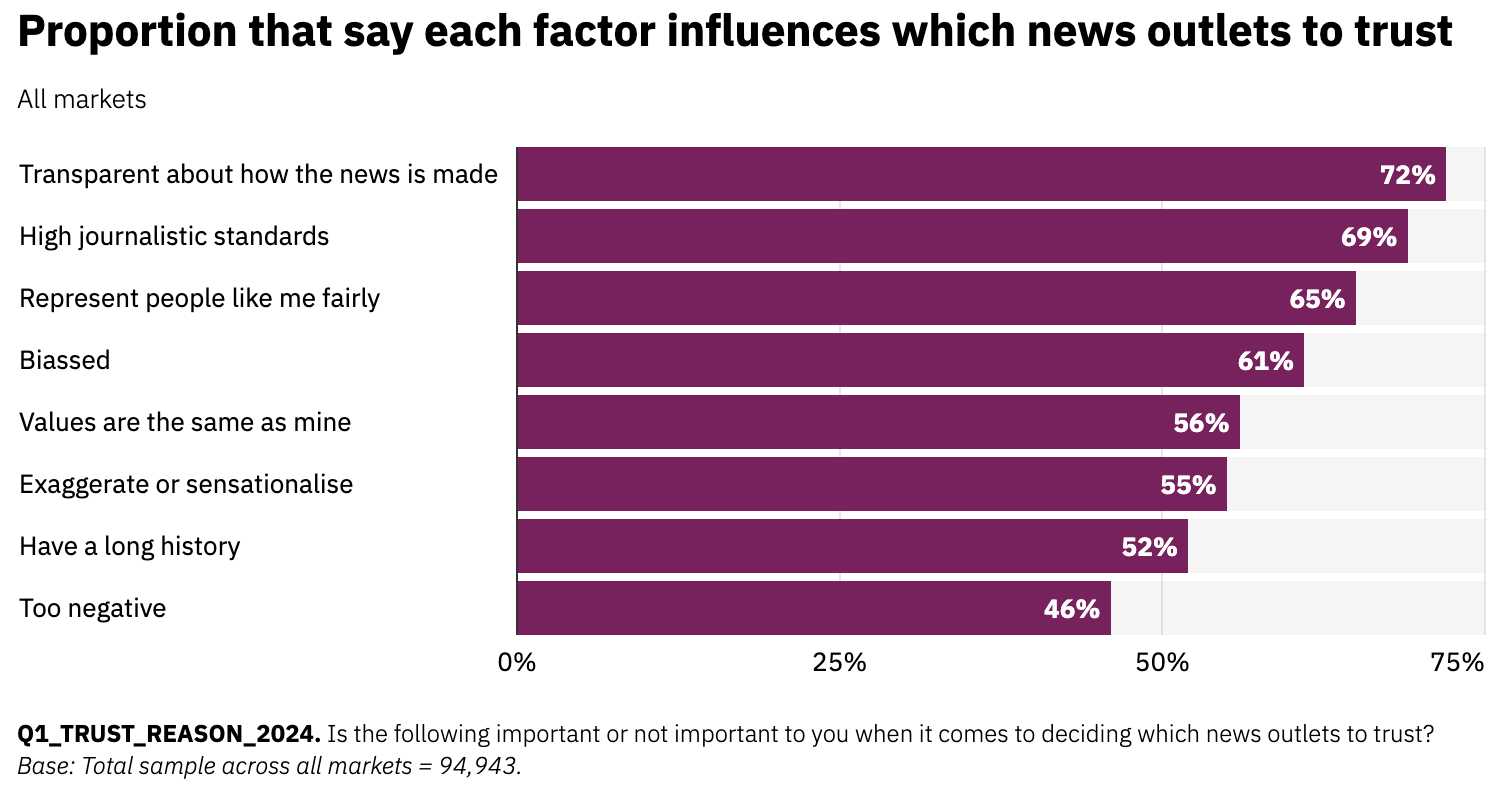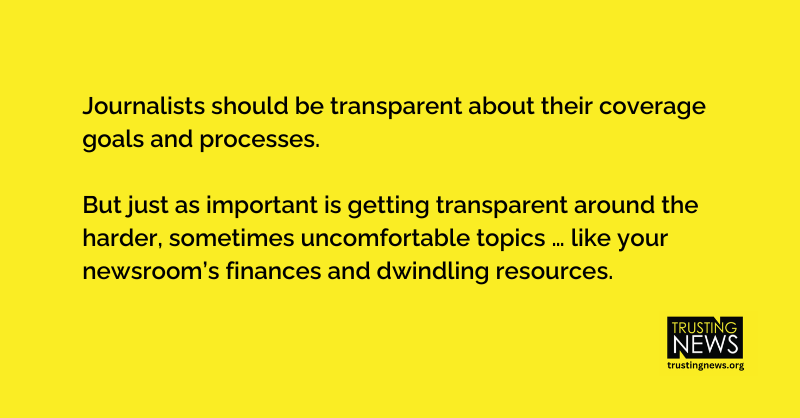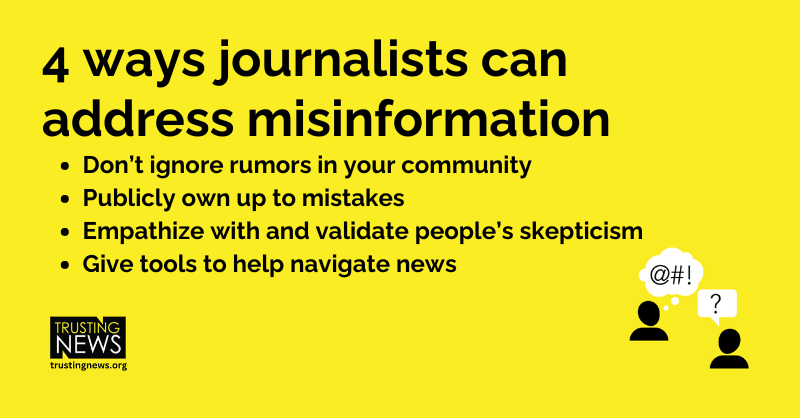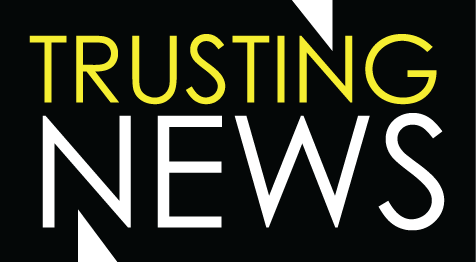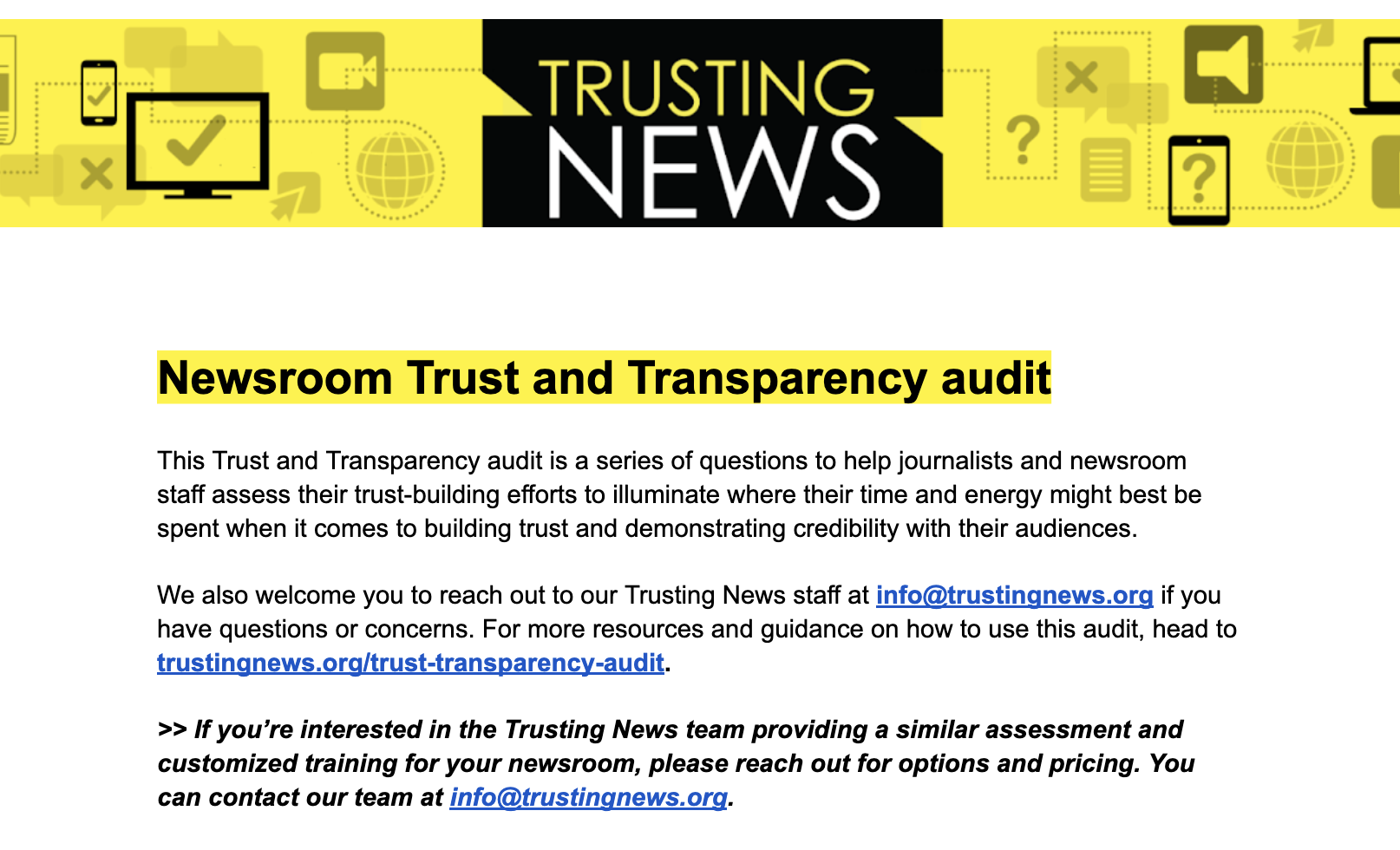
We created a trust audit to help your newsroom assess and decide where you should be working to earn your community’s trust
How trustworthy is your newsroom? Use this audit to find out
Most mission-driven journalists care a lot about being seen as a trusted, credible source of information in their communities.
But we see many journalists get stuck trying to figure out the best way to bridge the gap between people’s waning trust in news and the public service most newsrooms aspire to provide.
Even for journalists ready and eager to tackle building trust with the public, it can be overwhelming to figure out where to begin — especially amidst the many demanding priorities in newsrooms.
That’s why we created this Trust and Transparency Audit. It’s a series of 10 questions to help journalists and newsroom staff assess their trust-building efforts to illuminate where their time and energy might best be spent when it comes to building trust with their audiences. These questions are based on themes we’ve found are foundational when it comes to newsrooms building trust and reaching a wider audience.
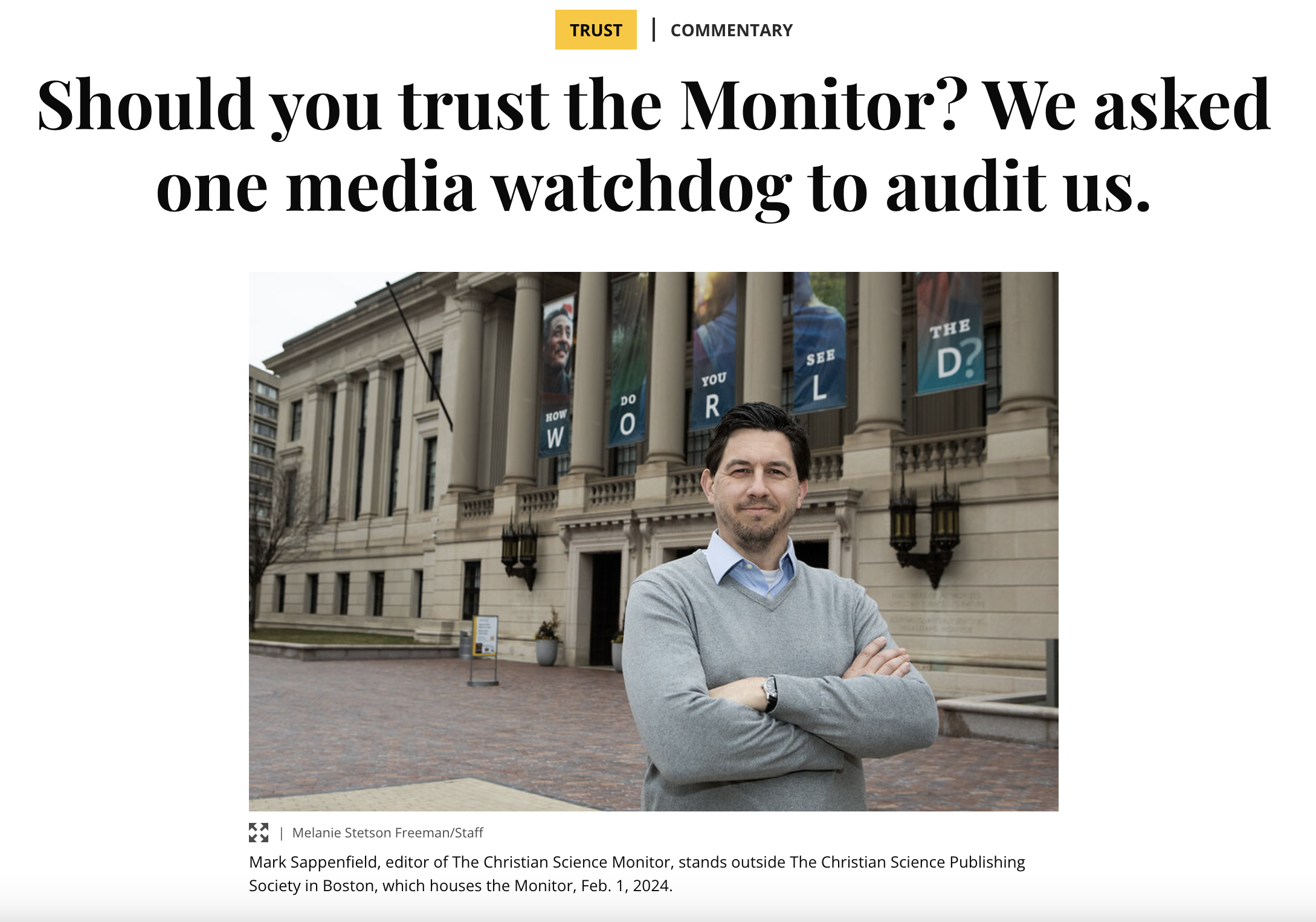
How we audited the Christian Science Monitor
We recently used this same audit to help assess the Christian Science Monitor’s trust and transparency efforts as part of the newsroom’s Rebuilding Trust series.
The structure of the audit helped highlight the many areas where the newsroom was excelling and helped reveal areas where the organization had room for growth.
As we filled out the audit for the newsroom, we found that the Monitor had a solid foundation of ethics and a strong public service mission. The audit also helped make clear that, like many other newsrooms, the Monitor could make its credibility easier for the audience to detect
You can read more about the assessment and what we found in this column we wrote for their readers.
Alongside this audit, our team provided a more detailed, internal assessment and recommendations specifically for the newsroom that included additional strategies, resources and specific guidance on how to level up their trust-building work.
>> If you’re interested in the Trusting News team providing a similar assessment and customized training for your newsroom, please reach out for options and pricing. You can contact our team at info@trustingnews.org.
Trust Audit: Questions to assess how transparent your newsroom is
We invite you to answer these questions individually, with your team or as an entire newsroom.
Alongside each major theme are linked resources with additional guidance and support specific to that topic.
- Engagement: Is the newsroom regularly in touch with its audience and trying to understand their perceptions and feelings toward news? Does newsroom staff routinely seek input on how they could better their coverage? This could include: In-person conversations, engagement events, online forms, social asks, responding to comments.
- About Us: Does the newsroom have an About Us page that includes the organization’s mission and goals, as well as contact information for staff? Do individual staff members have bios that include their mission, information about their experience and credibility, and their connection to the community?
- Daily transparency: Does the newsroom work to insert transparency about its reporting process into daily coverage? This could include articulating goals with specific coverage, explaining sourcing, coverage decisions, story selection, etc.
- Ethics and policies: Does the newsroom have public-facing policies that show the ethics behind its work, on topics such as ethics, corrections and conflicts of interest?
- Opinion and commentary: Does the newsroom clearly label opinion or commentary, in a way that is clear across all products and platforms, to separate it from other news coverage?
- Demonstrating value: Is the newsroom explaining the specific value they offer? Do they show empathy for news consumers’ often overwhelming experiences of consuming the news and offer opportunities to help people more easily connect with its coverage?
- Ownership and funding: Is the newsroom transparent about its ownership model, how it’s funded and how those factors may or may not impact coverage?
- Fairness: Does the newsroom share how the staff works to provide fair coverage? Do they internally examine how a story’s framing, sourcing and language may be conveyed to different groups of people, and make changes to make coverage less polarizing?
- Staff makeup: Are a variety of lived experiences, values and perspectives represented on the staff? Does the staff work to reach audiences across diverse, complex perspectives?
- Newsroom culture: Is the newsroom working to create a safe environment that allows for differences and dissent among staff? Are staff members regularly encouraged and given space to share their experiences and challenge coverage?
>>> Prefer a printable version? Download a PDF version of the audit here.
Using this audit
You’ll find that answering some of these questions feels straightforward, but answers to others about staff makeup and newsroom culture may be more challenging to reflect upon.
We suggest no matter how in-depth you go with answering these questions to take a few notes and reflect on any themes that emerge.
If you’re looking for more guidance on the themes touched on in this audit, browse through our self-guided training tools, Trust Kits. Each Trust Kit breaks down big trust-building strategies into actionable steps so you can start being more transparent with your audience and be seen as a credible news source.
We’re here to help!
If you use the audit, we’d love to hear how it goes and if it was helpful!
We’re also available to support journalists and newsrooms tackling new ways to earn trust with their audience. If you have questions about this audit or want specific guidance, reach out to our Trusting News at info@trustingnews.org, or on X/Twitter and LinkedIn.
| At Trusting News, we learn how people decide what news to trust and turn that knowledge into actionable strategies for journalists. We train and empower journalists to take responsibility for demonstrating credibility and actively earning trust through transparency and engagement. Learn more about our work, vision and team. Subscribe to our Trust Tips newsletter. Follow us on Twitter and LinkedIn. |

Project manager Mollie Muchna (she/her) has spent the last 10 years working in audience and engagement journalism in local newsrooms across the Southwest. She lives in Tucson, Arizona, where she is also an adjunct professor at the University of Arizona’s School of Journalism. She can be reached at mollie@trustingnews.org and on Twitter @molliemuchna.

